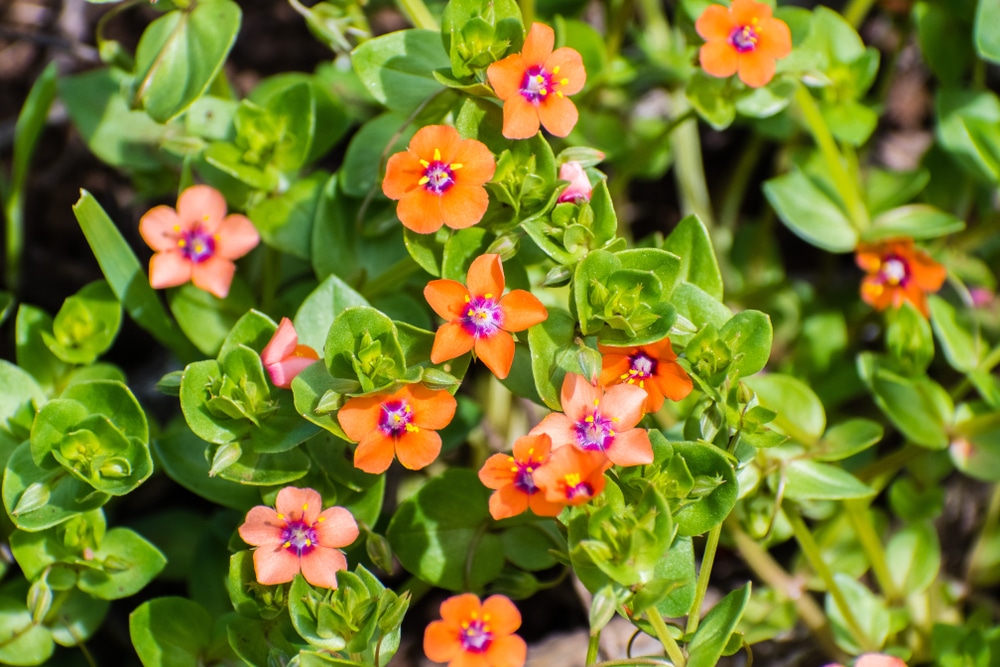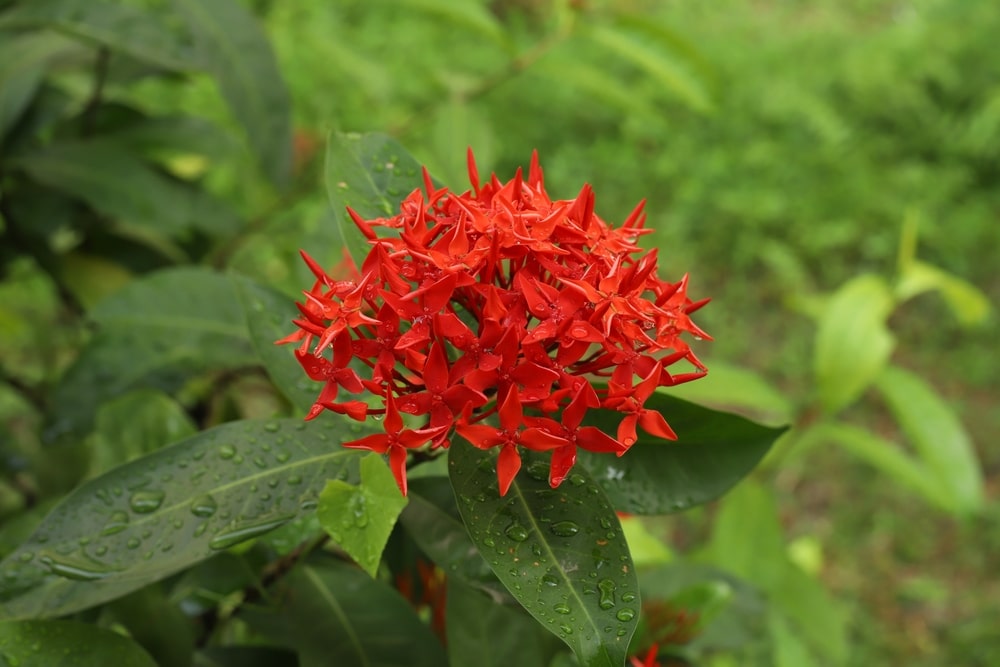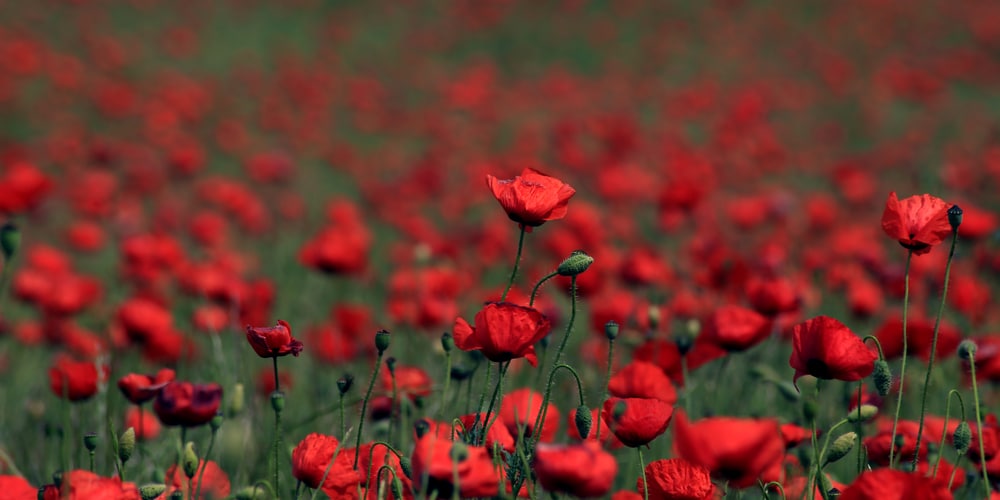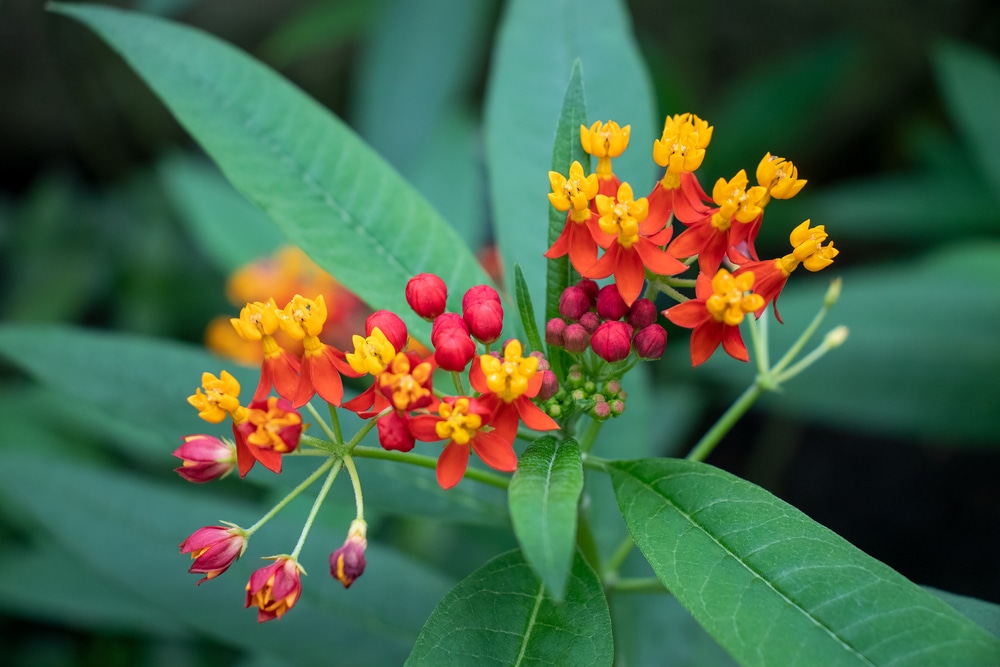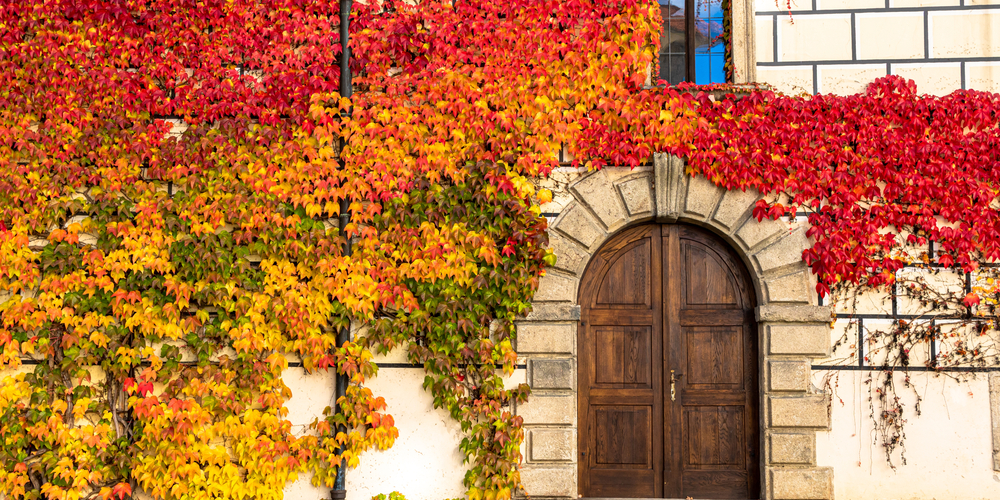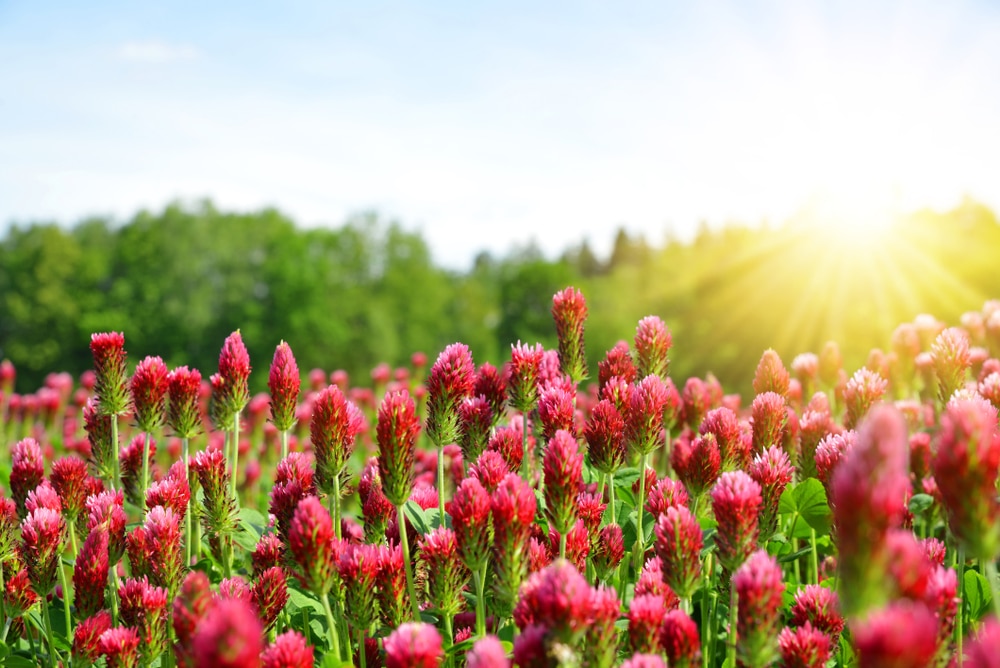Are there weeds with red flowers on your lawn, but you’re unsure where they came from or if they’re damaging? Whether you’re trying to identify the weed to remove them or are curious about the pretty flowers in your yard, we’ll help you identify them.
Though flowering weeds can be frustrating for some, they’re attractive to pollinating insects and birds, and some weeds can benefit your garden. On the other hand, some can be surprisingly harmful to pollinators or other animals on your land.
With that said, it’s essential to identify the potential weeds with red flowers so you can determine if you’d like to keep them around or remove them.
6 Weeds With Red Flowers
Below are some weeds with red flowers you may notice popping up in your yard.
Scarlet Pimpernel (Anagallis arvensis)
The scarlet pimpernel is an annual weed that can quickly invade your lawn or garden. This low-growing wildflower features square stems and pointed oval-shaped leaves with black dots underneath. The flowers are tiny, 5-petaled, reddish-orange, and typically around 10mm in diameter.
It’s important to note that Anagallis arvensis is poisonous to livestock, domestic animals, and humans. Additionally, this self-pollinating plant doesn’t typically rely on pollinating insects.
Tropical Milkweed (Asclepias curassavica)
Tropical milkweed is a non-native milkweed variety that has recently grown in popularity due to its attractive petals, lush green foliage, and ease of propagation. However, this rapidly growing plant can be problematic in areas where it doesn’t die in winter.
Ophryocystis elektroscirrha (OE) is a protozoan parasite monarch butterflies can carry when they visit milkweed plants. Native milkweeds die back in winter, killing this virus and allowing butterflies to eat parasite-free leaves when it re-emerges in summer. When caterpillars or butterflies ingest OE on non-native milkweeds, they are susceptible to lower migration success and a reduction in their mating success, flight ability, body mass, and overall lifespan.
Common Poppy (Papaver rhoeas)
You may be surprised to learn that the common poppy, with stunning red flowers, is an annual wildflower and technically a weed. Because common poppy seeds can lie dormant for decades, then germinate after soil disturbance, it’s coined as a remembrance symbol for WWI when poppies emerged on battlefields.
Although the Common Poppy is technically a weed, its beautiful flowers make it worth keeping in your yard. Additionally, they’re popular among pollinators like bees and butterflies.
Mexican Butterfly Weed (Asclepias curassavica)
Mexican butterfly weed, also known as blood flower, is another eye-catching milkweed variety. It features showy blooms that may be yellow, orange, or red. Although it’s an attractive weed to see pop up, it can be invasive outside of its native areas. This fast-growing re-seeding plant can quickly choke out other flowers in your garden.
If you decide to keep Mexican butterfly weed, you can keep the spread under control by removing new plants that pop up. Several bee species feed on the Mexican butterfly weed nectar, so it’s good to keep a few flowers if possible.
Virginia Creeper (Parthenocissus quinquefolia)
The Virginia creeping plant features stunning fall foliage with five leaflets that change from a bright green to shades of red, orange, and burgundy in the fall. As a close relative of the Boston ivy vine, the aptly named Virginia creeper can quickly spread when left out of control.
It’s important to note that the dark blue berries on this plant contain oxalic acid, which is toxic to humans. So, keep small children from picking and eating these fruits. Birds, on the other hand, can safely enjoy munching on them.
Crimson Clover (Trifolium incarnatum)
Last but not least, crimson clover, also known as red clover, is a weed that can be beneficial. One benefit is its nitrogen-fixing capabilities, meaning this plant to the nitrogen pool through a process referred to as nitrogen fixation. Additionally, its blooms have easy-to-access nectar for pollinating insects like bees.
On the other hand, it can be a pest when it appears in your yard without warning. Relocate crimson clover if possible, or remove it with weeding tools if it causes damage to your garden.
Final Thoughts
Some weeds with red flowers benefit your garden, while others can be harmful. Once you identify the plant, you can relocate it, control the spread, or remove it with tools like a garden hoe.
